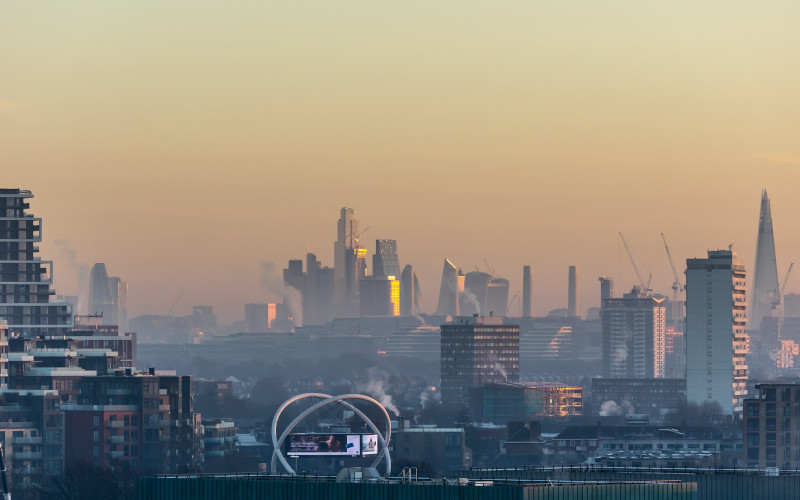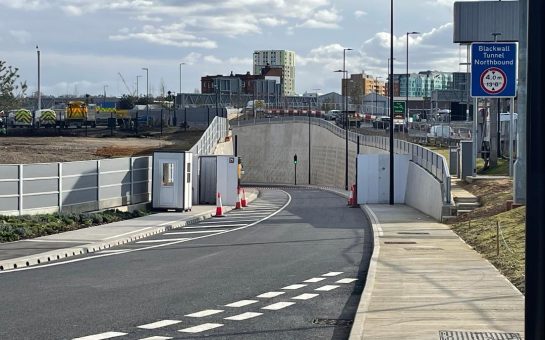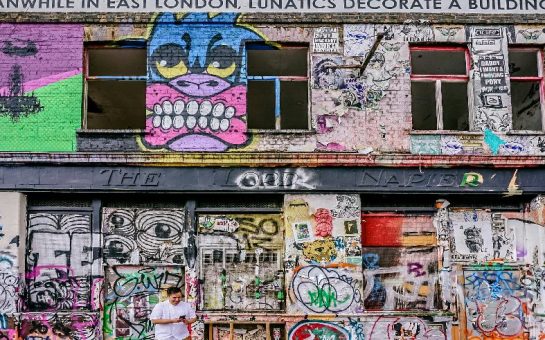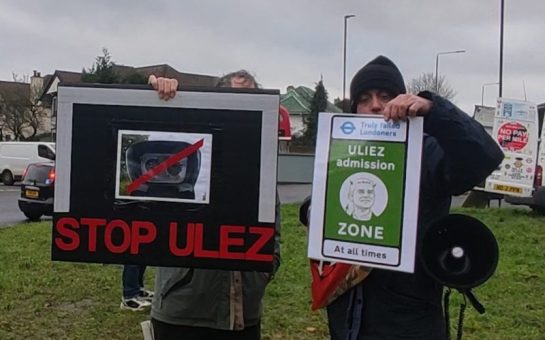Air pollution is reducing slower in outer London than in central London according to new data published by City Hall.
The study charted the rate of change in toxic emission levels across London by area between 2013 and 2019.
Inner and central London includes boroughs covered by the congestion charge and Ultra Low Emission Zone, and outer London comprises the group of boroughs surrounding these, including many South West London boroughs.
The data shows that from 2016 – 2019 nitrogen oxide emissions from vehicles reduced at half the rate in outer London than they did in central and inner London.
Alongside this the percentage reduction in fine particulate matter (PM10) was 10 times greater in central London than outer London, and the reduction in PM2.5 was five times greater.
Nitrogen dioxide and fine particulate matter (PM10 and PM2.5) are of particular concern as they worsen conditions such as asthma, lung and heart disease and affect the development of children’s lungs.
Fine particulate matter are microscopic droplets of pollutants that can be inhaled into the lungs and enter the bloodstream.
Currently all Londoners are exposed to more PM2.5 and nitrogen dioxide than the guidelines recommended by the World Health Organisation (WHO).
Over the entire study period between 2013 and 2019 there was a drastic difference in the percentage reduction in air pollution between central and outer London areas.
As shown in the figure above, the percentage reduction in toxic emissions produced between 2013 – 2019 was 50% in outer London, compared with 105% in inner London and 127% in central London.
This means that pollutants produced in inner and central London decreased four times more than outer London from 2013 – 2019.
The effects of air pollution in recent years have proven its devastating effect on Londoners living in certain areas of the capital.
A report by Imperial College London found that in 2019 the highest number of air pollution attributed deaths were found in outer London boroughs, the highest in Bromley, Barnet, Croydon and Havering.
This is attributed to a higher proportion of elderly people living in these areas who are more vulnerable to the impacts of air pollution.
Another study by Queen Mary’s University in 2018 of 2,000 children living in areas with high exposure to these pollutants showed that they had a loss of 5% in lung capacity.
The effect of toxic air on young children and babies was of particular concern to Mums for Lungs, a campaign group set up by mothers based in Brixton in 2017.
Although the data reveals an improvement in pollution levels in inner and central London they are concerned that cleaner air targets are not being met across the whole of London.
Jemima Hartshorn, founder of Mums for Lungs, said: “This data is a stark reminder that whilst the Mayor’s policies such as the Ultra Low Emission Zone have accelerated the reduction of toxic air in central and inner London, more work needs to be done to ensure all of London’s can kids grow up healthy.
“Mums for Lungs have long been campaigning for more to be done to ensure that London meets the stricter World Health Organization guidelines. We cannot afford to delay action on this any further – our children deserve to breathe clean air.”

Ana Santi, 41, lives with her husband and seven-year-old daughter in East Sheen near the South Circular.
She is a member of Mums for Lungs and is worried about the effects of air pollution from the busy road, especially as her daughter suffers from asthma.
Although Ana is not sure if her daughter’s asthma is linked to air pollution, she is concerned that it could worsen the effects of the condition.
She said: “It certainly makes me feel even more aware and worried knowing that she has asthma, and that the road is so polluted that it could aggravate it.”
She feels that changes need to happen to ensure that London air reaches a safe standard and wants to see ULEZ expanded to include the South Circular Road alongside the introduction of a 20 mile an hour speed limit along the road.
For those looking to cut down their emissions she urges a rethink to all but necessary car trips. She said: “Before you get in your car ask yourself, can you get wherever you’re going in a different way? And if you can, try it.”
The charity Asthma UK also want to see ULEZ and other measures rolled out across all London boroughs to protect people who are affected by asthma, and whose conditions are worse when there are high levels of pollution.
Tim Dexter, Campaigns Manager for Air Quality at Asthma UK and the British Lung Foundation said: “Air pollution is a health emergency which creates new lung conditions, worsens existing ones and costs the capital £3.7 billion each year.
“This latest analysis shows why new measures are urgently needed to tackle air pollution and protect people living in outer parts of London, who aren’t covered by the expanded Ultra Low Emission Zone (ULEZ), particularly those with serious lung conditions such as asthma and chronic obstructive pulmonary disease (COPD).
“These people are at the greatest risk of breathing difficulties and having asthma attacks or COPD flare-ups as a result of breathing dirty air. “
In response to City Hall’s findings the Mayor of London stated that the Government must invest in public transport infrastructure in outer London to ensure Londoners have access to greener methods of travel.
Sadiq Khan also announced that he is considering several policies to encourage drivers in London to shift to electric vehicles, public transport and active travel via foot or bike.
He said: “I pledged to be the greenest Mayor London has ever had and [this] data demonstrates the transformative and rapid impact of my air quality policies in central and inner London.
“However, air pollution still remains a major public health challenge and I’m not willing to stand by and wait when there’s more we can do in outer London that could make a big difference.
“We simply don’t have time to waste, there is still far too much toxic air pollution permanently damaging the lungs of young Londoners and affecting older people who are more vulnerable to the impacts of air pollution.
“I’m determined that we continue to be doers, not delayers to protect Londoners’ health right now, and for the sake of future generations to come.”
The #EngineOff campaign supported by the Mayor of London is currently being supported by London’s boroughs with the aim of combating the gases produced by idling cars.
However, many feel that there is much more that needs to be done to make sure that London is reaching its cleaner air targets.





Join the discussion